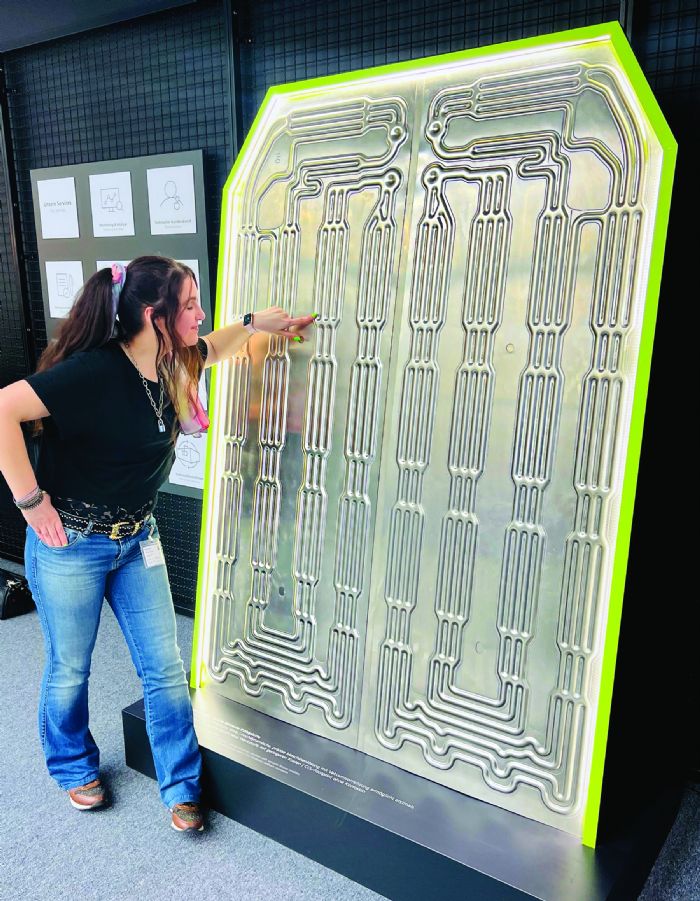 Speed and efficiency: Laser welding is a fast process that can significantly reduce production time. Unlike arc welding, which requires slower and more deliberate movements, lasers can make rapid, continuous welds with minimal downtime. This efficiency can lead to higher throughput in manufacturing—especially important for mass production in the automotive industry, which requires large numbers of cooling plates.
Speed and efficiency: Laser welding is a fast process that can significantly reduce production time. Unlike arc welding, which requires slower and more deliberate movements, lasers can make rapid, continuous welds with minimal downtime. This efficiency can lead to higher throughput in manufacturing—especially important for mass production in the automotive industry, which requires large numbers of cooling plates.
Complex geometries: Laser welding machines can follow complex paths, allowing manufacturers to weld cooling plates with complex shapes and geometries. The precise control over the welding process also ensures that coolant channels remain intact and leak-free.
Minimal heat: Laser welding applies focused energy directly to the weld joint, minimizing the amount of heat transfer to the surrounding material. This reduces thermal distortion, critical when welding thin materials such as those used in cooling plates. Low heat input also reduces the risk of introducing stresses or defects that could affect cooling-plate performance.
Beam shaping: State-of-the-art laser welding technology uses multiple laser beams simultaneously directed at the weld joint. Unlike traditional single-spot laser welding, which uses one laser beam to weld a joint, multiple-spot welding spreads the energy over a wider area along the seam. This approach provides several advantages, especially when working with complex geometries or materials with high thermal conductivity, such as aluminum. The larger keyhole also allows for better fusion control at high speeds, and can significantly reduce defects such as porosity, cracks and incomplete fusion. This ultimately lowers the scrap rate and renders laser welding of cooling plates a viable option.
Reduced post-weld treatment: A main challenge with other welding methods is the need for post-weld treatments, such as grinding, polishing or stress-relief heat treatments, to ensure that the final product meets quality standards. Laser welding, due to its precision and minimal heat input, often requires little to no post-weld treatment. This not only speeds the manufacturing process but also improves the overall quality and consistency of the final product.
Lower contamination risk: Laser welding operates in a highly controlled environment, often using inert-gas shielding to protect the weld from contamination. This proves particularly beneficial when working with materials that are sensitive to oxidation or contamination. The controlled process helps ensure clean, strong welds.
Automation capabilities: Laser welding is easily automated, allowing metal fabricators to integrate the process into robotic systems for high-volume production. Automated welding systems can operate with high consistency, ensuring that each cooling plate is welded to the same standard of quality. Automation also reduces the potential for human error, which improves the overall reliability of the manufacturing process.
Challenges when Laser Welding Cooling Plates
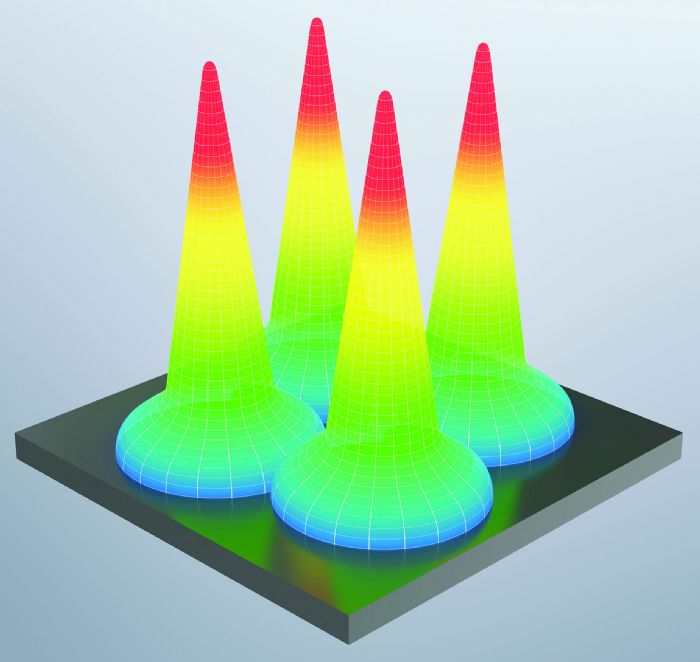 While laser welding offers many advantages, some challenges must be addressed, particularly when working with EV battery cooling plates. Evaluation of the suitability of laser welding to a process should include material selection, material fitup and the effect of an oxide layer.
While laser welding offers many advantages, some challenges must be addressed, particularly when working with EV battery cooling plates. Evaluation of the suitability of laser welding to a process should include material selection, material fitup and the effect of an oxide layer.
Material selection: Different materials may respond differently to laser welding, and some metal alloys, such as 6000-series aluminum, can be more challenging to weld due to susceptibility to weld cracking. Proper preparation and careful control of welding parameters are crucial to ensure good welds.
Material fitup: Achieving the recommended joint gap between the two aluminum plates is fundamental to achieving high-quality, reliable laser welds. It helps to ensure proper fusion and minimal heat distortion, and will help prevent porosity and defects while maintaining the integrity of the cooling system’s hermetic seal. Understanding and controlling the gap condition in laser welding will continue to be a key factor in ensuring the success of battery cooling-plate production. Some additional success factors include highly accurate stamping dies as well as suitable welding tools to control fitup conditions across all mating surfaces.
Oxidation: A primary issue with the oxide layer during laser welding of aluminum is its interference with proper fusion between the aluminum surfaces. Oxidation can contribute to the formation of porosity in the weld. This is easily addressed by laser cleaning systems that can remove the oxide layer before welding. MF
View Glossary of Metalforming Terms
See also: TRUMPF Inc.
Technologies: Welding and Joining
Comments
Must be logged in to post a comment. Sign in or Create an Account
There are no comments posted.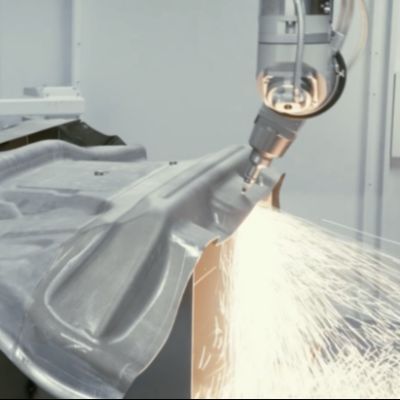 Welding and Joining
Welding and JoiningArcelorMittal, Trumpf Partner for Hot Stamping Laser-Welded ...
Monday, February 24, 2025
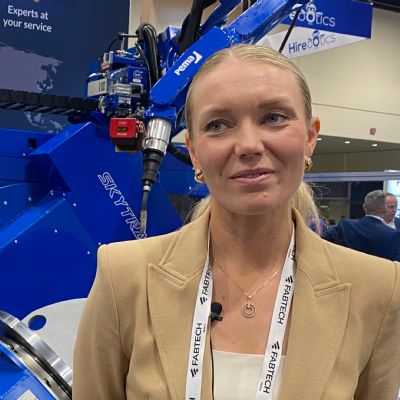 Welding and Joining
Welding and JoiningPemamek Heavy-gauge Robot Welding Station Revealed at FABTEC...
Kate Bachman Friday, November 8, 2024







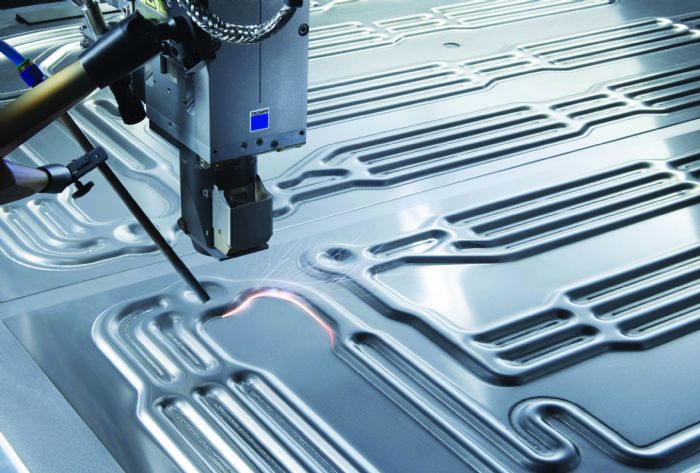 Thermal performance-managing cooling plates, typically fabricated of metal, distribute coolant across the battery cells to maintain an optimal operating temperature. When the battery operates under high-power conditions, such as during rapid charging or discharging, the cooling plate helps to regulate the temperature, preventing thermal runaway or damage to the battery cells.
Thermal performance-managing cooling plates, typically fabricated of metal, distribute coolant across the battery cells to maintain an optimal operating temperature. When the battery operates under high-power conditions, such as during rapid charging or discharging, the cooling plate helps to regulate the temperature, preventing thermal runaway or damage to the battery cells. 